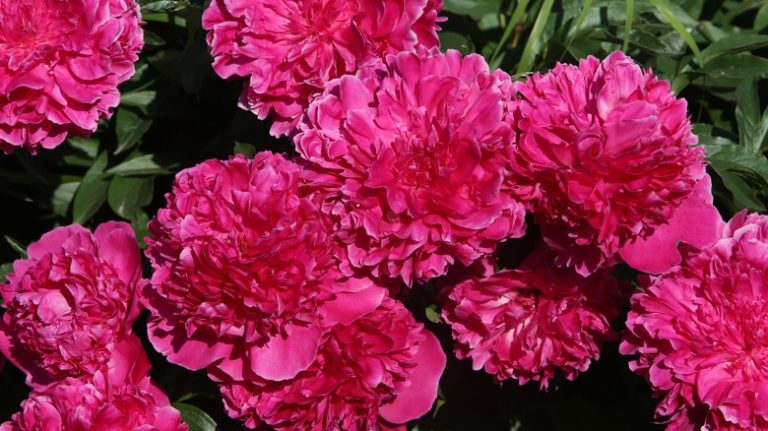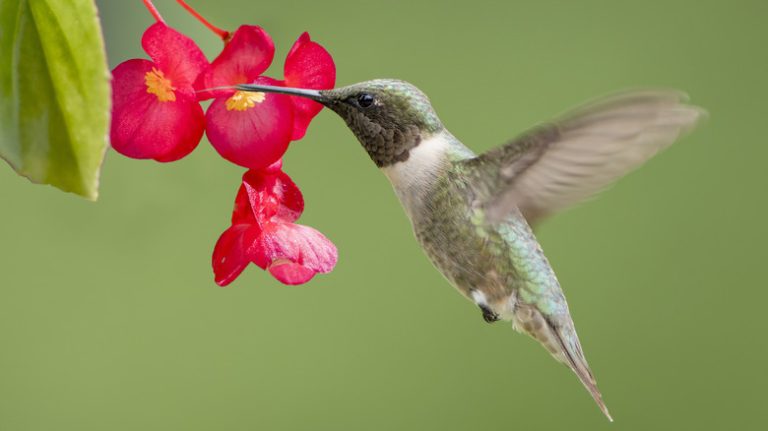Aster tataricus, also known as the Tatarian aster, is a beautiful perennial plant that is native to East Asia. It was introduced to North America in the late 1800s and has since become a popular addition to gardens across the continent. With its tall, elegant stems and large, lavender-blue flowers, this aster is a stunning sight in the fall garden.
The leaves of the Aster tataricus are long and lance-shaped, and the plant can reach a height of over 6 feet. It prefers full sun and well-drained soils, but it can tolerate a wide range of soil conditions. In combination with other late-blooming flowers, such as Solidago and Chrysanthemum, the Aster tataricus can create a vibrant display in the November garden.
One of the good characteristics of this plant is its hardiness. It can withstand both extreme heat and cold temperatures. In fact, it has a USDA hardiness zone rating of 4 to 8. This makes it a suitable choice for gardens in both the northern and southern regions of the United States.
The Aster tataricus begins blooming in late summer and continues into the fall. The flowers are made up of numerous small lavender-blue petals and have a powdery texture. The outer petals taper to a point and have tiny yellow glands on their tips. The blooming branches are hairy and covered in a fine powdery substance, giving the plant a unique texture.
Although the Aster tataricus can spread and become weedy if not managed properly, it is a great addition to gardens and natural areas where conservation efforts are in place. Its tall growth habit and full foliage provide excellent cover for wildlife, and its late-season blooms provide much-needed nectar for bees and butterflies in the fall.
“Aster tataricus is a true star in the November garden. Its beautiful blooms and hardy nature make it a standout in any landscape. If you’re looking to add a touch of late-season color to your garden, look no further than the Tatarian aster.”
Crinitaria tatarica
Crinitaria tatarica, also known as Tatarian aster, is a herbaceous perennial plant that belongs to the Asteraceae family. It is native to eastern Europe and western Asia, but has been introduced to North America.
The Tatarian aster is a tall plant, with straight stems that can grow up to 4 feet in height. The stems are covered in fine hairs and have a powdery texture. The leaves of the plant are thin and lance-shaped, and have a green color.
In late summer and early autumn, the Tatarian aster produces clusters of lavender-blue flowers. Each flower has yellow petals and a central disk of yellow glands. The flowers are held on branching stems, giving the plant a stately and full form.
Crinitaria tatarica is a good plant for gardens, as it is easy to grow and does well in a variety of soil types. It prefers well-drained soils, but can tolerate sandy or clay soils. The plant is also drought-tolerant and can withstand heat.
In the garden, the Tatarian aster can be used as a specimen plant, or can be planted in mass to create a dramatic effect. It pairs well with other late-blooming plants, such as goldenrods and sedums. The plant also attracts butterflies and bees, making it a great addition to a pollinator garden.
Although the Tatarian aster can be found growing wild in some areas, it is considered weedy in others. It has naturalized in parts of the United States, particularly in the northeastern region. The plant is classified as absent in England, according to the USDA Plants Database.
In conclusion, Crinitaria tatarica is a beautiful and versatile plant that can add a touch of late-season color to the garden. Its star-like flowers and stately growth form make it a standout among other plants. Whether used as a focal point or as part of a larger planting scheme, the Tatarian aster is sure to please any gardener.
Aster Tataricus A Floral Star in the November Garden
The Aster Tataricus, also known as the Tatarian Aster, is a natural perennial herbaceous plant that belongs to the Asteraceae family. It is native to Eastern Asia and was introduced to America by Linnaeus in the 18th century.
This plant is known for its fine straight stems and beautiful lavender-blue flowers, which can reach a height of at least 6 feet. The flowers have yellow glands on their petals and exude a sap when they are cut or bruised.
The leaves of the Aster Tataricus are lance-shaped and hairy, covering the stem all the way to the top. The foliage is green and tapers to a pointed tip, making it an attractive addition to any garden.
The Aster Tataricus is found in wetland habitats, especially in areas with moist soils and good drainage. It is often seen growing in meadows, along stream banks, and in low-lying areas. It prefers full sun but can tolerate some shade.
When it comes to blooming, the Aster Tataricus is a late-bloomer, with its flowers appearing in late summer and continuing into November. This makes it a great addition to a garden that needs some color and interest during the fall season.
In terms of distribution, the Aster Tataricus can be found in many parts of the world, including China, Japan, Korea, and Russia. In the United States, it is commonly found in the eastern states.
The Aster Tataricus has become a popular choice among gardeners for its attractive flowers and low-maintenance characteristics. It is considered a conservation status plant in some areas due to its natural habitat loss and invasive nature.
| Facts about Aster Tataricus: | |
|---|---|
| Family: | Asteraceae |
| Zone: | 3-8 |
| Height: | 6+ feet |
| Blooming: | Late summer to November |
| Habitat: | Wetlands, meadows, stream banks |
| Distribution: | China, Japan, Korea, Russia, eastern United States |
| Status: | Conservation status in some areas |
The Aster Tataricus produces numerous seeds, which are dispersed by the wind. It can also spread through underground rhizomes, making it a potential weedy plant in some areas.
In conclusion, the Aster Tataricus is a stunning plant with its star-like lavender-blue flowers and fine straight stems. It adds beauty to any garden, especially during the late summer and fall months. Its low-maintenance characteristics and natural habitat make it a great choice for gardeners looking to enhance their landscape.
Tatarian Aster Aster tataricus
The Tatarian Aster, scientifically known as Aster tataricus, is a type of flowering plant in the family Asteraceae. It is a stately herbaceous perennial that is native to Eastern Asia and can be found in wide habitats, ranging from wetland areas to garden centers. The plant has a tall and spreading growth habit, with stems that can reach up to 6 feet in height.
The flowers of the Tatarian Aster are the main attraction, blooming in full glory during the fall season, specifically the month of November. The flowers are known for their vibrant colors, with shades ranging from purple to blue. They have a unique star-like form, with long outer petals and a central disc of smaller flowers. The leaves are green and have a fine texture.
Tatarian Aster is a hardy plant that can withstand frost and cold temperatures. It prefers moist soils and can tolerate both sun and partial shade. It is a low-maintenance plant that is relatively easy to grow, with good resistance to pests and diseases.
The Tatarian Aster is often used as a specimen plant in gardens, as it provides a burst of late-season color when many other plants have finished blooming. It can also be used in borders, mass plantings, or as a backdrop for shorter plants. The plant also attracts pollinators like bees and butterflies, making it a popular choice for gardeners who want to support local wildlife.
Some interesting facts about the Tatarian Aster:
- The plant was introduced to North America by the famous botanist Carl Linnaeus in the 18th century.
- It is sometimes considered a weedy plant, as it has naturalized in some areas outside of its native range.
- The Tatarian Aster is one of the tallest members of the Asteraceae family, with some specimens reaching up to 10 feet in height.
- Its scientific name, Aster tataricus, comes from the Latin word “aster” meaning star and “tataricus” referring to the Tatar people of Central Asia.
In conclusion, the Tatarian Aster is an impressive and eye-catching plant that adds a touch of elegance to the November garden. With its tall stems, vibrant colors, and star-like flowers, it is truly a floral star that deserves a place in any garden.
Tatarian aster
Tatarian aster (Aster tataricus) is a type of flowering plant native to North America. It is commonly found in the eastern parts of the continent, and it has also been introduced to other regions. Tatarian aster belongs to the Asteraceae family and is known for its stately and natural bloom.
The plants grow to a height of about 3-6 feet and have a spreading growth habit. They have herbaceous stems that are hairy and straight. The leaves are lance-shaped with a pointed tip, and they have a hairy texture. The flowers of the Tatarian aster bloom in November and are yellow in color. The petals are crinitaria in shape, and the center of the flower is covered with yellow powdery sap. The stem of the plant is sturdy and does not require support.
Tatarian aster is adaptable to different soil types and can grow in both wetland and well-drained soils. It can thrive in full sun or partial shade. Although it can tolerate some drought conditions, it prefers moist soil. The plant is also heat resistant and can withstand high temperatures.
Tatarian aster is a good addition to any garden due to its attractive floral display and low maintenance requirements. It can be grown as a specimen plant or in groups to create a beautiful garden display. The plant also attracts butterflies and other pollinators, making it beneficial for ecosystem conservation.
In terms of conservation status, Tatarian aster is not listed as endangered or threatened. It is considered a common plant in its native habitat and is widely cultivated in gardens. However, it is important to prevent the plants from becoming weedy as they can spread and displace native species.
In conclusion, Tatarian aster is a beautiful and versatile plant that adds a floral star to the November garden. Its characteristics, such as its stately bloom, heat resistance, and adaptable growth, make it a popular choice for gardeners. Whether used as a single plant or in combinations, Tatarian aster is sure to enhance any garden with its vibrant yellow flowers.



